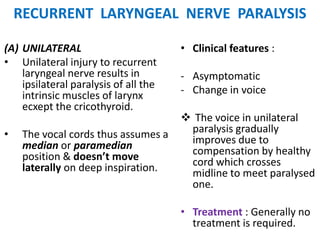Which Of The Following Is A Common Complication Of Laryngeal Paralysis?
Boas And Laryngeal Paralysis By Dani Mccready
Keywords searched by users: Which of the following is a common complication of laryngeal paralysis laryngeal paralysis when to euthanize, how long can dogs live with laryngeal paralysis, laryngeal paralysis medication, laryngeal paralysis surgery, laryngeal collapse in dogs symptoms, laryngeal paralysis and hind end weakness, what to feed a dog with laryngeal paralysis, how long can a dog live with laryngeal paralysis without surgery
What Is The Most Common Cause Of Laryngeal Paralysis?
Laryngeal paralysis, a condition that affects the function of the voice box, can occur due to various underlying causes. One of the most common factors leading to laryngeal paralysis is surgical procedures involving the neck or upper chest, during which damage can occur to the nerves responsible for controlling the vocal cords. Additionally, traumatic incidents, such as neck or chest injuries, can contribute to this condition. Other potential causes of laryngeal paralysis include strokes, the presence of tumors in the affected area, infections, and various neurological conditions. Understanding these diverse factors is crucial in comprehending the root causes of laryngeal paralysis, which can impact one’s ability to speak and breathe effectively. Please note that this information is as of June 18, 2022.
What Happens When You Have Laryngeal Paralysis?
Laryngeal paralysis is a medical condition that affects dogs, impacting their ability to breathe properly. In this condition, the dog’s larynx, which is the cartilaginous structure responsible for controlling airflow into and out of the windpipe, fails to open correctly when the dog inhales. Instead of opening smoothly, the sides of the larynx are drawn inward, obstructing the airflow and making it difficult for the dog to breathe comfortably. This condition can lead to symptoms such as coughing, wheezing, and labored breathing, and it requires veterinary attention for proper diagnosis and treatment. Please note that the information provided is accurate as of September 2021, and developments in understanding or treating laryngeal paralysis may have occurred since then.
Which Is A Typical Symptom Of Laryngeal Paralysis?
Laryngeal paralysis is a condition that is often underdiagnosed despite its relatively common occurrence. One of the typical symptoms associated with laryngeal paralysis is persistent coughing, which tends to worsen after physical activity or exertion. In addition to coughing, other common signs include noisy breathing, difficulty in tolerating exercise, excessive panting, and a noticeable alteration in the sound of the affected dog’s bark, known as dysphonia. These various symptoms collectively highlight the range of clinical indicators that veterinarians consider when evaluating dogs for laryngeal paralysis.
Update 45 Which of the following is a common complication of laryngeal paralysis


Categories: Aggregate 64 Which Of The Following Is A Common Complication Of Laryngeal Paralysis
See more here: trangtraigarung.com

Aspiration pneumonia is a common complication of laryngeal paralysis surgery, but it can also occur in dogs who have not undergone surgery. A mild cough after eating and drinking is not uncommon after a tie-back procedure.Laryngeal paralysis is a condition where a dog’s windpipe fails to open correctly when breathing in. Rather than opening as it should, the sides of the windpipe are sucked into the opening.“Unfortunately, laryngeal paralysis is probably more common than it is diagnosed.” Coughing, especially after exercise or exertion, is probably the most frequently reported sign, followed by noisy breathing, exercise intolerance, excessive panting, and a change in the sound of the bark (dysphonia).
- Injury to the vocal cord during surgery. Surgery on or near the neck or upper chest can result in damage to the nerves that serve the voice box. …
- Neck or chest injury. …
- Stroke. …
- Tumors. …
- Infections. …
- Neurological conditions.
Learn more about the topic Which of the following is a common complication of laryngeal paralysis.
- Laryngeal paralysis
- Vocal cord paralysis – Symptoms and causes – Mayo Clinic
- Symptoms & Treatment of Laryngeal Paralysis in Dogs – Rock Hill
- Laryngeal Paralysis in Dogs | VCA Animal Hospitals
- Recurrent Laryngeal Nerve Injury – StatPearls – NCBI Bookshelf
- Paralysis of the Larynx in Dogs – Dog Owners – Merck Veterinary Manual
See more: blog https://trangtraigarung.com/category/blog